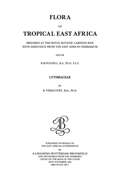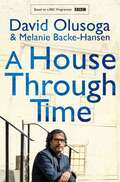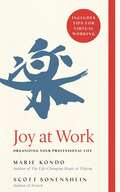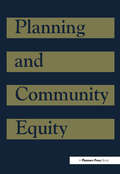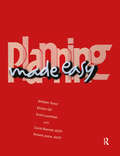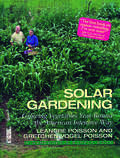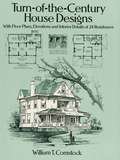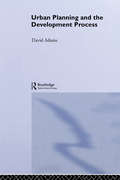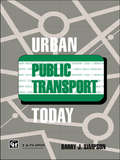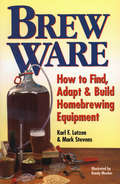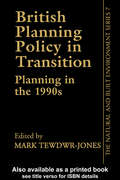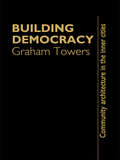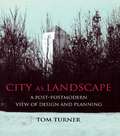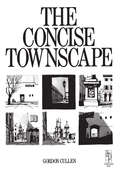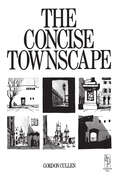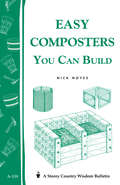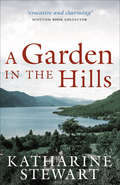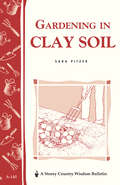- Table View
- List View
Flora of Tropical East Africa - Lythraceae (1994)
by B. VerdcourtThis book is a comprehensive review of the genera of Lythraceae, a flowering plant family of mostly trees and shrubs, found in tropical East Africa. It presents information on their character, occurrence, habitat, phenotypic variations and distribution of each of the species under these genera.
A House Through Time: Tv Tie-in
by David OlusogaIn recent years house histories have become the new frontier of popular, participatory history. People, many of whom have already embarked upon that great adventure of genealogical research, and who have encountered their ancestors in the archives and uncovered family secrets, are now turning to the secrets contained within the four walls of their homes and in doing so finding a direct link to earlier generations. And it is ordinary homes, not grand public buildings or the mansions of the rich that have all the best stories.As with the television series, A House Through Time offers readers not only the tools to explore the histories of their own homes, but also a vividly readable history of the British city, the forces of industry, disease, mass transportation, crime and class. The rises and falls, the shifts in the fortunes of neighbourhoods and whole cities are here, tracing the often surprising journey one single house can take from elegant dwelling in a fashionable district to a tenement for society’s rejects.Packed with remarkable human stories, it is a phenomenal insight into living history, a history we can see every day on the streets where we live. And it reminds us that it is at home that we are truly ourselves. It is there that the honest face of life can be seen. At home, behind closed doors and drawn curtains, we live out our inner lives and family lives.
Joy at Work: Organizing Your Professional Life
by Marie Kondo Scott SonensheinIf you properly simplify and organize your work life once, you’ll never have to do it again. Marie Kondo's first book, The Life-Changing Magic of Tidying, sparked a new genre of publishing and became an international bestseller. Now, for the first time, you will be guided through the process of tidying up your work life.In Joy at Work, KonMari method pioneer Marie Kondo and organizational psychologist Scott Sonenshein will help you to refocus your mind on what's important at work, and as their examples show, the results can be truly life-changing. With advice on how to improve the way you work, the book features advice on problem areas including fundamentals like how to organize your desk, finally get through your emails and find what sparks joy in an open plan office. Like how the key to successful tidying in the home is by tackling clutter in the correct order, Joy at Work adapts the inspirational KonMari Method for the workplace, taking you step-by-step through your professional environment so that you can identify the most joyful way to work for you. Once you’ve found order in your work life, you can feel empowered to find confidence, energy and motivation to create the career you want and move on from negative working practices.
Planning and Community Equity: A Component of APA's Agenda for America's Communities
by American Institute of Certified PlannersThis thought-provoking book exhorts planners to establish community development programs that achieve greater social and economic equity. Some of the 13 chapters urge planners to incorporate community equity concerns into traditional planning areas such as transportation and economic development. Others challenge planners to get more involved in social areas such as urban education and community policing. Each chapter is authored by one or more professionals with expertise in the subject at hand. A helpful resource for planners who continue to tackle the problems of inequality.
Planning and Community Equity: A Component of APA's Agenda for America's Communities
by American Institute of Certified PlannersThis thought-provoking book exhorts planners to establish community development programs that achieve greater social and economic equity. Some of the 13 chapters urge planners to incorporate community equity concerns into traditional planning areas such as transportation and economic development. Others challenge planners to get more involved in social areas such as urban education and community policing. Each chapter is authored by one or more professionals with expertise in the subject at hand. A helpful resource for planners who continue to tackle the problems of inequality.
Planning Made Easy
by William Toner Efraim Gil Enid Lucchesi Carol Barrett Robert JoiceDeveloping a program to train planning commissioners and zoning board members takes a lot of time and effort. This manual makes the process easier. It covers the basics of community planning, zoning, subdivision regulation, and ethics. With chapters organized in discrete modules, it's ideal for both self-study and classroom use. Narratives explain general planning principles. Exercises encourage users to think about the planning issues in their communities. And worksheets reinforce important concepts. A complementary training guide, Training Made Easy, is also available. Planning Made Easy is published as looseleaf pages in a three-ring notebook.
Planning Made Easy
by William Toner Efraim Gil Enid Lucchesi Carol Barrett Robert JoiceDeveloping a program to train planning commissioners and zoning board members takes a lot of time and effort. This manual makes the process easier. It covers the basics of community planning, zoning, subdivision regulation, and ethics. With chapters organized in discrete modules, it's ideal for both self-study and classroom use. Narratives explain general planning principles. Exercises encourage users to think about the planning issues in their communities. And worksheets reinforce important concepts. A complementary training guide, Training Made Easy, is also available. Planning Made Easy is published as looseleaf pages in a three-ring notebook.
Solar Gardening: Growing Vegetables Year-Round the American Intensive Way (Real Goods Independent Living Bks.a\real Goods Independent Living Book)
by Leandre Poisson Gretchen Vogel Poisson Robin WimbiscusSolar Gardening shows how to increase efforts of the sun during the coldest months of the year and how to protect tender plants from the intensity of the scorching sun during the hottest months through the use of solar "mini-greenhouses." The book includes instructions for building a variety of solar appliances plus descriptions of more than 90 different crops, with charts showing when to plant and harvest each. The result is a year-round harvest even from a small garden. In Solar Gardening the Poissons show you how to: Dramatically increase the annual square-foot yield of your garden. Extend the growing and harvest season for nearly every kind of vegetable. Select crops that will thrive in the coldest and hottest months of the year, without artificial heating or cooling systems. Build solar appliances for your own garden. Armed with nothing but this book and a few simple tools, even novice gardeners can quickly learn to extend their growing season and increase their yields, without increasing the size of their garden plot.
Turn-of-the-Century House Designs: With Floor Plans, Elevations and Interior Details of 24 Residences
by William T. ComstockThis inexpensive archive of handsome turn-of-the-century designs reprinted directly from a rare late Victorian volume contains plans for a variety of suburban and country homes that are both aesthetically appealing and moderate in cost. Included are plans for 24 cottages and houses in a wide range of styles, among them Queen Anne, Eastlake, and Colonial. Over 130 illustrations — floor plans, elevations, perspective views, and more — enhance the text, which is further supplemented by two informative and useful articles: "Suggestions on House Building," by A. W. Cobb, describes the process of building a home, from the first sketches offered by the architect to his client, to property selection, scale drawings, and details of construction. “How to Plumb a Suburban House,” by Leonard D. Hosford, provided the late Victorian era homeowner with valuable advice about sewage disposal.Restorers of old houses, preservationists, and students of American architectural history will welcome this treasury of authentic century-old plans and details. Students of social history will also find it an excellent reference.
Urban Planning And The Development Process
by David AdamsThis text is about the very essence of urban planning in a market economy. It is concerned with people - landowners, developers, investors, politicians and ordinary members of the public - who produce change in towns and cities as they relate to each other and react to development Pressure. Whether Such Change Occurs Slowly And Is Almost Unnoticed, Or happens rapidly and is highly disruptive, a production process is creating a finished product: the built environment. This form of production, known as the land and property development process, is regulated but not controlled by the state. Urban planning is therefore best considered as one form of state intervention in the development process.; Since urban planning would have no legitimate basis without state power, it is an inherently political activity, able to alter the distribution of scarce environmental resources. Through doing so, it seeks to resolve conflicts of interest over the use and development of land. However, urban plans that appear to favour particular interests such as house-builders above others such as community groups provoke intense controversy. Development planning can thus become highly politicized, with alliances and divisions between politicians not always explained by traditional party politics.; These issues are explored with particular reference to statutory plan-making at the local level. The author draws on his extensive research into urban planning and development, making use of recent case studies and examples to illustrate key points. There are four parts. The first explores the operation of land and property markets and development processes, and examines how the state intervenes in the form of urban planning. The second part looks at the people and organizations who play a critical role in shaping the built environment and considers their relationship with the planning system. Specific attention is paid to important actors in the development process, such as landowners, developers, financial institutions, professional advisers and to the variety of agencies in the public sector that aim to promote development. This concludes with discussion of public- private partnerships and growth coalitions. The third part of the book concentrates on local development planning.
Urban Planning And The Development Process
by David AdamsThis text is about the very essence of urban planning in a market economy. It is concerned with people - landowners, developers, investors, politicians and ordinary members of the public - who produce change in towns and cities as they relate to each other and react to development Pressure. Whether Such Change Occurs Slowly And Is Almost Unnoticed, Or happens rapidly and is highly disruptive, a production process is creating a finished product: the built environment. This form of production, known as the land and property development process, is regulated but not controlled by the state. Urban planning is therefore best considered as one form of state intervention in the development process.; Since urban planning would have no legitimate basis without state power, it is an inherently political activity, able to alter the distribution of scarce environmental resources. Through doing so, it seeks to resolve conflicts of interest over the use and development of land. However, urban plans that appear to favour particular interests such as house-builders above others such as community groups provoke intense controversy. Development planning can thus become highly politicized, with alliances and divisions between politicians not always explained by traditional party politics.; These issues are explored with particular reference to statutory plan-making at the local level. The author draws on his extensive research into urban planning and development, making use of recent case studies and examples to illustrate key points. There are four parts. The first explores the operation of land and property markets and development processes, and examines how the state intervenes in the form of urban planning. The second part looks at the people and organizations who play a critical role in shaping the built environment and considers their relationship with the planning system. Specific attention is paid to important actors in the development process, such as landowners, developers, financial institutions, professional advisers and to the variety of agencies in the public sector that aim to promote development. This concludes with discussion of public- private partnerships and growth coalitions. The third part of the book concentrates on local development planning.
Urban Public Transport Today
by Dr Barry Simpson B. SimpsonThis book is about how local public transport can be made a less unacceptable alternative to the private car than it is now. It is intended for officials, politicians and others interested in the land use/local transport conundrum. It is also valuable to town planners, those working for passenger transport authorities and anyone concerned with policy making and project appraisal for local public transport.
Urban Public Transport Today
by Dr Barry Simpson B. SimpsonThis book is about how local public transport can be made a less unacceptable alternative to the private car than it is now. It is intended for officials, politicians and others interested in the land use/local transport conundrum. It is also valuable to town planners, those working for passenger transport authorities and anyone concerned with policy making and project appraisal for local public transport.
Brew Ware: How to Find, Adapt & Build Homebrewing Equipment
by Karl F. Lutzen Mark StevensGear up with the right equipment and take the hassle out of homebrewing. Karl E. Lutzen and Mark Stevens guide you through the best tools for all your brewing needs, from DIY homemade versions of commercial brewery equipment to simple devices that make brewing easier and safer. Learn which gadgets and gizmos work best for measuring, mashing, bottling, kegging, and more. With the proper tools close at hand you&’ll save both time and money, leaving you free to focus on enjoying your homebrewed beers.
British Planning Policy
by Mark Tewdwr-JonesFirst Published in 1995. Routledge is an imprint of Taylor & Francis, an informa company.
British Planning Policy: Planning In The Major Years
by Mark Tewdwr-JonesFirst Published in 1995. Routledge is an imprint of Taylor & Francis, an informa company.
Building Democracy
by Graham TowersBuilding Democracy is a major contribution to the growing public debate about the revival of community values in the face of the self-evident short-comings of the free market, specifically in terms of community architecture. Providing a historical context and an authoritative account of a movement that is proving surprisingly extensive and enduring, the book also examines the relevance of the approach to today's social and environmental problems, particularly in the inner cities. Community architecture was promoted in the early 1980s as the achievement of a handful of pioneering architects finding new ways of working with groups of ordinary people, to help them develop their own homes and community facilities. Building Democracy records the achievements of this movement and analyzes its contribution in addressing the problems of inner cities. Beginning with the origins of the urban question in the industrialization of the 19th century, the book goes on to look at the large-scale urban redevelopment of the 1960s - the latest and most concerted attempt to remodel Victorian cities, and on to community action, from which grew new approaches to design, development and construction. This book is of practical value to planners, architects, surveyors and landscape designers concerned with socially relevant design, as students or professionals. It will also be of interest to many people in the voluntary sector and in local government.
Building Democracy
by Graham TowersBuilding Democracy is a major contribution to the growing public debate about the revival of community values in the face of the self-evident short-comings of the free market, specifically in terms of community architecture. Providing a historical context and an authoritative account of a movement that is proving surprisingly extensive and enduring, the book also examines the relevance of the approach to today's social and environmental problems, particularly in the inner cities. Community architecture was promoted in the early 1980s as the achievement of a handful of pioneering architects finding new ways of working with groups of ordinary people, to help them develop their own homes and community facilities. Building Democracy records the achievements of this movement and analyzes its contribution in addressing the problems of inner cities. Beginning with the origins of the urban question in the industrialization of the 19th century, the book goes on to look at the large-scale urban redevelopment of the 1960s - the latest and most concerted attempt to remodel Victorian cities, and on to community action, from which grew new approaches to design, development and construction. This book is of practical value to planners, architects, surveyors and landscape designers concerned with socially relevant design, as students or professionals. It will also be of interest to many people in the voluntary sector and in local government.
City as Landscape: A Post Post-Modern View of Design and Planning
by Tom TurnerIn twenty essays, this book covers aspects of planning, architecture, urban design, landscape architecture, park and garden design. Their approach, described as post-postmodern, is a challenge to the 'anything goes' eclecticism of the merely postmodern.
City as Landscape: A Post Post-Modern View of Design and Planning
by Tom TurnerIn twenty essays, this book covers aspects of planning, architecture, urban design, landscape architecture, park and garden design. Their approach, described as post-postmodern, is a challenge to the 'anything goes' eclecticism of the merely postmodern.
Concise Townscape
by Gordon CullenThis book pioneered the concept of townscape. 'Townscape' is the art of giving visual coherence and organization to the jumble of buildings, streets and space that make up the urban environment. It has been a major influence on architects, planners and others concerned with what cities should look like.
Concise Townscape
by Gordon CullenThis book pioneered the concept of townscape. 'Townscape' is the art of giving visual coherence and organization to the jumble of buildings, streets and space that make up the urban environment. It has been a major influence on architects, planners and others concerned with what cities should look like.
Easy Composters You Can Build: Storey's Country Wisdom Bulletin A-139 (Storey Country Wisdom Bulletin)
by Nick NoyesSince 1973, Storey's Country Wisdom Bulletins have offered practical, hands-on instructions designed to help readers master dozens of country living skills quickly and easily. There are now more than 170 titles in this series, and their remarkable popularity reflects the common desire of country and city dwellers alike to cultivate personal independence in everyday life.
A Garden in the Hills
by Katharine StewartFrom the author of the Highland classic A Croft in the Hills, this illustrated book celebrates one of mankind's oldest pleasures. Month by month we are taken through a year in the life of Katharine Stewart's garden. The circle of the seasons is luminously evoked as we are told of the practicalities of gardening, cooking, bee-keeping and wine-making. Peppered with warm, personal insights, good humour and a love of living things, the joy of nature has never sounded so rewarding.
Gardening in Clay Soil: Storey's Country Wisdom Bulletin A-140 (Storey Country Wisdom Bulletin)
by Sara PitzerSince 1973, Storey's Country Wisdom Bulletins have offered practical, hands-on instructions designed to help readers master dozens of country living skills quickly and easily. There are now more than 170 titles in this series, and their remarkable popularity reflects the common desire of country and city dwellers alike to cultivate personal independence in everyday life.
